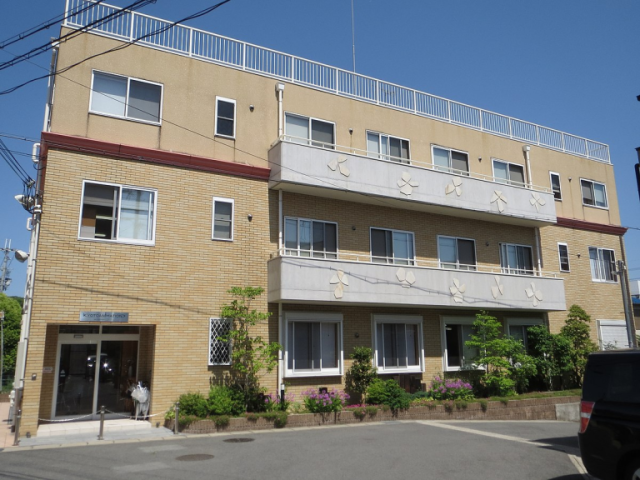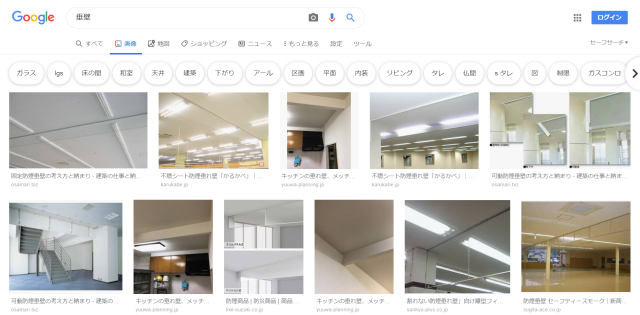
Rooftop was accessible, and the company had even received a certificate of commendation from the city of Kyoto for excellent fire safety.
It’s been five days since an arsonist walked into the Kyoto, Fushimi Ward anime studio of Kyoto Animation and set the building ablaze, killing 34 people and injuring approximately as many. As fans of animation and simple human decency struggle to wrap their minds about the terrible tragedy that’s taken place, it’s natural to wonder if more could have been done to prevent the staggering loss of human life.
The anime industry in general doesn’t have the best reputation for treating its workers well or operating with much spare space in its budgets. With that background, some people have wondered if perhaps Kyoto Animation had been negligent in keeping its building up to fire code, and if such dereliction is to blame for the death toll rising as high as it has.
However, in a report to the city council on July 22, the Kyoto City Fire Department says that Kyoto Animation’s Fushimi studio had taken the proper fire protection measures, including performing employee fire drills, as laid out in the city’s fire code.
Civilian observers and online commenters have raised questions about two specific elements of the building’s design, both related to stairways. Connecting the first and second floors of the three-story studio was an interior spiral staircase, and some have questioned whether or not such a feature was legal, as it would ostensibly make descent slower in the case of an emergency. Spiral staircases are allowed by the Kyoto fire department, though, provided there is also a hanging protrusion from the ceiling, called a tarekabe in Japanese, to block the flow of smoke to the upper level in case of a fire, and Kyoto Animation’s studio did have tarekabe sufficient with the legal requirements.
▼ A Google image search for tarekabe
Many have also voiced concerns about roof access for the building, as the bodies of 19 of the 34 deceased were found piled in a stairwell that connected the third floor and roof. The number of victims who perished there caused some to speculate that the door to the roof had been locked, but investigators have found that this was not the case, and that the door could be opened from the inside, though one Kyoto Animation employee describes the door as having an unusual two-lever mechanism that could be difficult for those who’d never used it before to operate.
Investigators believe that employees were overcome by the effects of smoke inhalation as they attempted to flee to the open air of the roof, and as victims collapsed in the stairwell, it stands to reason that the clogged pathway made it harder for others trying to get to the roof to make progress up the steps, compounding the problem as each new arrival collapsed.
That may make it sound like the above-mentioned tarekabe failed to do its job, but it’s important to keep in mind the standards under which Kyoto’s fire safety laws were likely created. Fire codes are primarily designed to help protect a building’s occupants in the case of an accidental fire. The Kyoto Animation fire, however, was the work of a violent criminal, who showed up in the lobby with multiple canisters of gasoline, with enough fuel that an explosion occurred when he ignited it. As a deliberate attack, the Kyoto Animation crosses beyond the realm of ordinary safety issues and becomes as much a question of security protocols, some of which were shut down at the studio on the day of the attack.
By the standards of ordinary fire codes, drafted in order to prevent accidents and protect occupants in the case of their occurrence, Kyoto Animation’s fire safety protocols had been judged not just sufficient, but exemplary even. In 2014, the Fushimi studio was awarded a certificate of commendation by the fire department for its fire safety compliance.
“Despite our best efforts to rescue those who still had so many hopes and dreams, who still had their futures ahead of them, so many perished,” said Kyoto fire department head Hiroki Yamauchi during the report to the city council, “and we are deeply saddened by their loss.” Meanwhile, Kyoto Animation president Hideaki Hatta hopes to turn the site of the fire into a memorial park dedicated to the victims.
Sources: NHK News Web via Hachima Kiko, Nitele News 24, Jiji
Top image: Wikipedia/MikeHattsu
Insert image: Google
● Want to hear about SoraNews24’s latest articles as soon as they’re published? Follow us on Facebook and Twitter.


 Kyoto Animation arson attack prompts call for stricter gas sale regulations in Kyoto
Kyoto Animation arson attack prompts call for stricter gas sale regulations in Kyoto Anime studio attacked by arsonist, explosion leaves dozens injured, 12 dead
Anime studio attacked by arsonist, explosion leaves dozens injured, 12 dead Kyoto Animation accepting direct, individual donations for arson victims via special bank account
Kyoto Animation accepting direct, individual donations for arson victims via special bank account Another Kyoto Animation employee passes away, brings arson death toll to 36
Another Kyoto Animation employee passes away, brings arson death toll to 36 “We will not go quietly into the night. We will not vanish without a fight,” vows Kyoto Animation
“We will not go quietly into the night. We will not vanish without a fight,” vows Kyoto Animation Japan’s new difficult-to-drink-from beer glass protects your liver, but it’s a brutal experience
Japan’s new difficult-to-drink-from beer glass protects your liver, but it’s a brutal experience How to order snacks on a Shinkansen bullet train in Japan
How to order snacks on a Shinkansen bullet train in Japan New samurai glasses are Japan’s latest weird must-have souvenir
New samurai glasses are Japan’s latest weird must-have souvenir “Deflowering” services for virgin women are now a thing in Japan, apparently
“Deflowering” services for virgin women are now a thing in Japan, apparently Doraemon found buried at sea as scene from 1993 anime becomes real life【Photos】
Doraemon found buried at sea as scene from 1993 anime becomes real life【Photos】 Burger King Japan suddenly adds Dr. Pepper and Dr. Pepper floats to its menu nationwide
Burger King Japan suddenly adds Dr. Pepper and Dr. Pepper floats to its menu nationwide Hello, cosmetics! Clinique teams up with Hello Kitty this summer for first-time collaboration
Hello, cosmetics! Clinique teams up with Hello Kitty this summer for first-time collaboration Princesses, fruits, and blacksmiths: Study reveals the 30 most unusual family names in Japan
Princesses, fruits, and blacksmiths: Study reveals the 30 most unusual family names in Japan High-fashion Totoro cuddle purse is like an elegant stroll in the forest【Photos】
High-fashion Totoro cuddle purse is like an elegant stroll in the forest【Photos】 Demon Slayer: Kimetsu no Yaiba gets new roller coaster attractions and food at Universal Studios Japan
Demon Slayer: Kimetsu no Yaiba gets new roller coaster attractions and food at Universal Studios Japan Nintendo history you can feel – Super NES, N64, and GameCube controllers become capsule toys
Nintendo history you can feel – Super NES, N64, and GameCube controllers become capsule toys “The most Delicious Cup Noodle in history” – Japan’s French Cup Noodle wins our heart【Taste test】
“The most Delicious Cup Noodle in history” – Japan’s French Cup Noodle wins our heart【Taste test】 Starbucks releases a cute Frappuccino and Unicorn Cake…but not in Japan
Starbucks releases a cute Frappuccino and Unicorn Cake…but not in Japan Kyoto Tower mascot termination reveals dark side behind cute Japanese characters
Kyoto Tower mascot termination reveals dark side behind cute Japanese characters McDonald’s Japan’s Soft Twist Tower: A phantom ice cream only sold at select branches
McDonald’s Japan’s Soft Twist Tower: A phantom ice cream only sold at select branches Yabai Ramen: What makes this Japanese ramen so dangerous?
Yabai Ramen: What makes this Japanese ramen so dangerous? Finally! Nintendo Japan expands Switch 8-bit controller sales to everybody, Online member or not
Finally! Nintendo Japan expands Switch 8-bit controller sales to everybody, Online member or not Japanese government wants to build luxury resorts in all national parks for foreign tourists
Japanese government wants to build luxury resorts in all national parks for foreign tourists To combat declining birth rate, Japan to begin offering “Breeding Visas” to foreigners
To combat declining birth rate, Japan to begin offering “Breeding Visas” to foreigners 10 things you should buy at 7-Eleven in Japan
10 things you should buy at 7-Eleven in Japan Studio Ghibli releases anime heroine cosplay dresses that are super comfy to wear
Studio Ghibli releases anime heroine cosplay dresses that are super comfy to wear Woman charged for driving suitcase without a license in Osaka
Woman charged for driving suitcase without a license in Osaka Studio Ghibli unveils My Neighbour Totoro miniature house model
Studio Ghibli unveils My Neighbour Totoro miniature house model Kyoto experiencing problems with foreign tourists not paying for bus fares, but not on purpose
Kyoto experiencing problems with foreign tourists not paying for bus fares, but not on purpose Fighting mild hunger with a Japanese soda that turns into jelly in the stomach【Taste test】
Fighting mild hunger with a Japanese soda that turns into jelly in the stomach【Taste test】 Studio Ghibli’s Howl’s Moving Castle tapestry unveiled in Japan for first time
Studio Ghibli’s Howl’s Moving Castle tapestry unveiled in Japan for first time McDonald’s new Happy Meals offer up cute and practical Sanrio lifestyle goods
McDonald’s new Happy Meals offer up cute and practical Sanrio lifestyle goods Sales of Japan’s most convenient train ticket/shopping payment cards suspended indefinitely
Sales of Japan’s most convenient train ticket/shopping payment cards suspended indefinitely Sold-out Studio Ghibli desktop humidifiers are back so Totoro can help you through the dry season
Sold-out Studio Ghibli desktop humidifiers are back so Totoro can help you through the dry season Japanese government to make first change to romanization spelling rules since the 1950s
Japanese government to make first change to romanization spelling rules since the 1950s Foreigner’s request for help in Tokyo makes us sad for the state of society
Foreigner’s request for help in Tokyo makes us sad for the state of society Ghibli founders Toshio Suzuki and Hayao Miyazaki contribute to Japanese whisky Totoro label design
Ghibli founders Toshio Suzuki and Hayao Miyazaki contribute to Japanese whisky Totoro label design Tokyo’s most famous Starbucks is closed
Tokyo’s most famous Starbucks is closed New arrest warrant issued for Kyoto Animation arson suspect
New arrest warrant issued for Kyoto Animation arson suspect Kyoto Animation closing donation account for arson attack victims soon
Kyoto Animation closing donation account for arson attack victims soon Kyoto Animation announces it will build two memorials to victims of anime studio arson attack
Kyoto Animation announces it will build two memorials to victims of anime studio arson attack Names of 10 Kyoto Animation arson victims released, family and friends offer words of remembrance
Names of 10 Kyoto Animation arson victims released, family and friends offer words of remembrance Kyoto Animation arson attack leads Japanese government to develop stricter gas sale regulations
Kyoto Animation arson attack leads Japanese government to develop stricter gas sale regulations Kyoto Animation arsonist sent more than one novel to company as part of annual writing contest
Kyoto Animation arsonist sent more than one novel to company as part of annual writing contest Kyoto Animation victims’ names may be disclosed without families’ agreement, investigator says
Kyoto Animation victims’ names may be disclosed without families’ agreement, investigator says Real-life high school from Kyoto Animation’s Sound! Euphonium wins gold medal at band competition
Real-life high school from Kyoto Animation’s Sound! Euphonium wins gold medal at band competition Goodbye, Kyoto Animation Studio #1 – Arson-struck studio now completely demolished, cleared away
Goodbye, Kyoto Animation Studio #1 – Arson-struck studio now completely demolished, cleared away All hospitalized Kyoto Animation arson victims’ lives are no longer in danger, doctors say
All hospitalized Kyoto Animation arson victims’ lives are no longer in danger, doctors say Kyoto Animation arsonist to be finally placed under arrest for July attack that killed 36
Kyoto Animation arsonist to be finally placed under arrest for July attack that killed 36 Kyoto Animation official donation account raises over 1 billion yen (US$10.1 million) in one week
Kyoto Animation official donation account raises over 1 billion yen (US$10.1 million) in one week Mental illness issues could make death penalty impossible for Kyoto Animation arsonist
Mental illness issues could make death penalty impossible for Kyoto Animation arsonist Kyoto Animation president wants to turn site of arson attack into memorial park for victims
Kyoto Animation president wants to turn site of arson attack into memorial park for victims “Oh, is that so?” says Kyoto Animation arsonist when told how many people he killed
“Oh, is that so?” says Kyoto Animation arsonist when told how many people he killed Death penalty formally requested for Kyoto Animation arsonist by prosecutors as trial closes
Death penalty formally requested for Kyoto Animation arsonist by prosecutors as trial closes
Leave a Reply